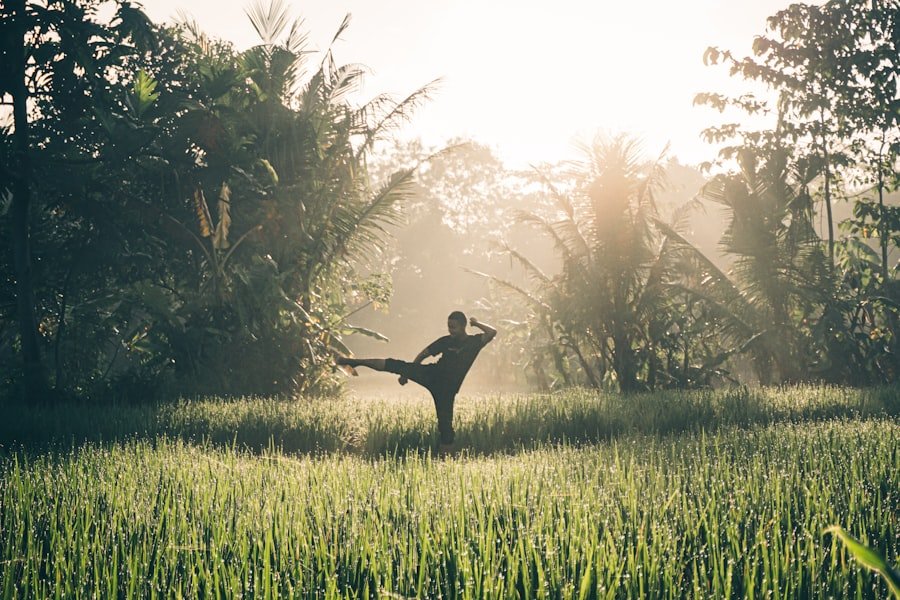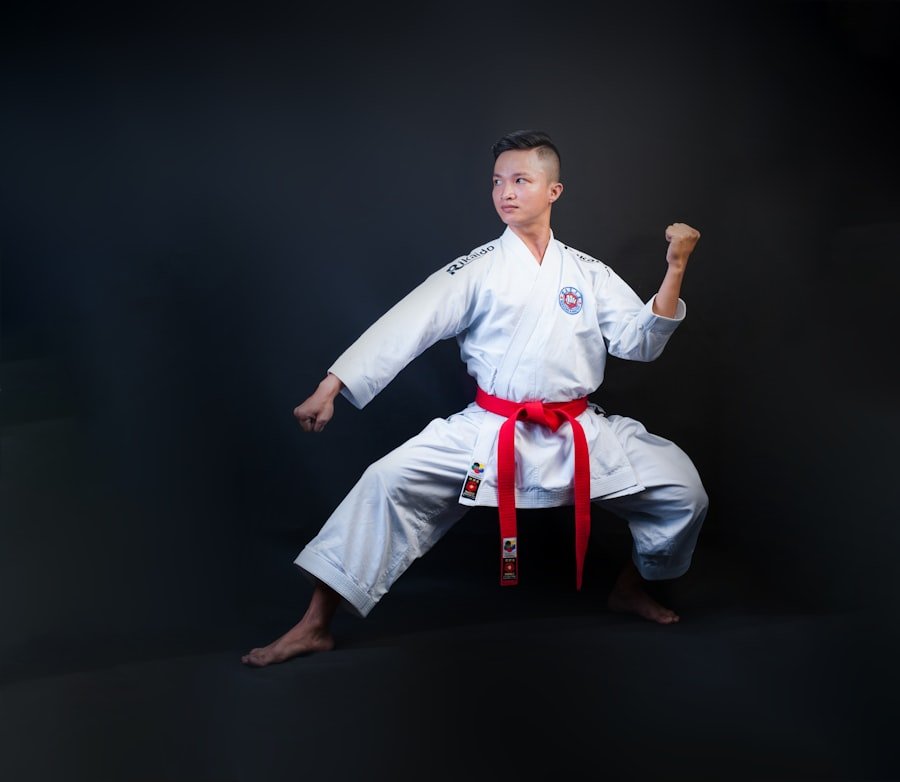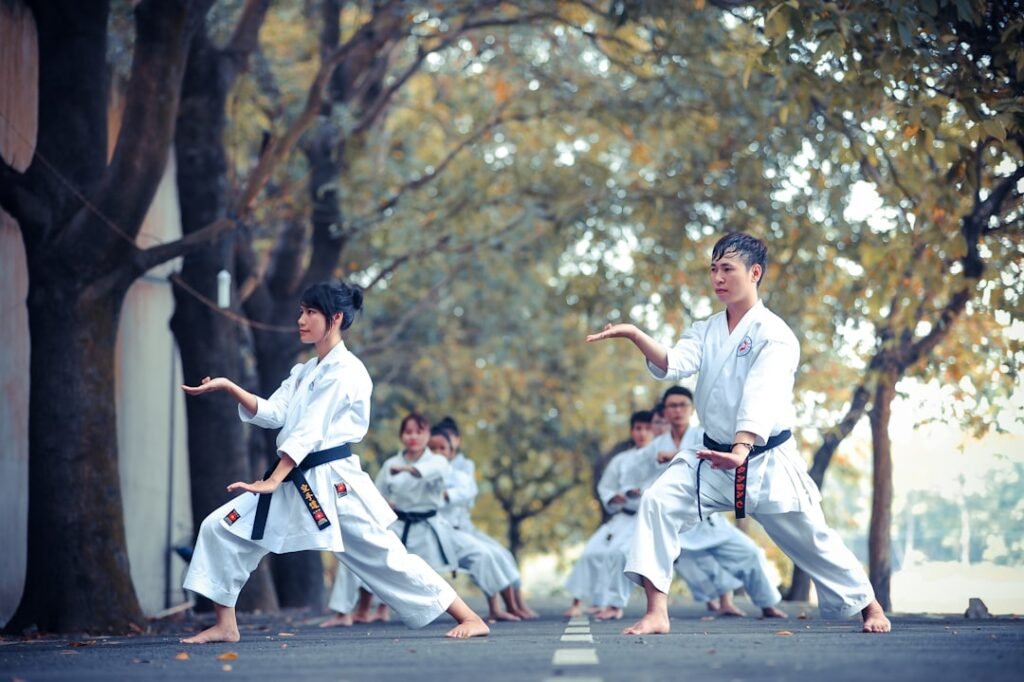Kung Fu, a term that encompasses a variety of Chinese martial arts, has a rich and storied history that dates back thousands of years. Its origins can be traced to the ancient practices of self-defence and military training in China, where the need for effective combat techniques arose from the tumultuous periods of warfare and conflict. The earliest records of martial arts in China can be found in texts such as the “Shiji” (Records of the Grand Historian), which document the existence of various fighting styles as early as the 5th century BCE.
These early forms of martial arts were often influenced by philosophical teachings, particularly those of Confucianism, Daoism, and Buddhism, which emphasised harmony, balance, and self-discipline. As time progressed, Kung Fu evolved into a more structured system of techniques and philosophies. The Shaolin Temple, established in the 5th century CE, became a pivotal institution in the development of Kung Fu.
Monks at the temple not only practised meditation but also engaged in physical training to enhance their martial skills. This fusion of spiritual and physical discipline laid the groundwork for many Kung Fu styles that are practised today. The traditions established at Shaolin have been passed down through generations, creating a legacy that continues to inspire martial artists around the world. Spaces are filling up fast! Register for Chinese classes at the LC Chinese School in Oslo today.
Table of Contents
ToggleSummary
- Kung Fu originated in China and has a rich history and tradition dating back thousands of years.
- The philosophy behind Kung Fu emphasises discipline, respect, and self-improvement, as well as the integration of mind, body, and spirit.
- Kung Fu encompasses a wide range of techniques and movements, with different styles focusing on various aspects of combat and self-defence.
- Kung Fu holds significant cultural importance in China, with deep roots in traditional Chinese values and beliefs.
- Kung Fu has been popularised in various forms of media, including film, television, and literature, shaping its portrayal in popular culture.
The Philosophy Behind Kung Fu: Understanding the Mindset and Principles of this Ancient Practice
At its core, Kung Fu is not merely a collection of fighting techniques; it embodies a profound philosophy that emphasises personal growth, discipline, and respect. Central to this philosophy is the concept of “Wu De,” or martial virtue, which encourages practitioners to cultivate moral integrity alongside their physical abilities. This principle serves as a guiding force for students, reminding them that true mastery of Kung Fu extends beyond physical prowess to encompass ethical behaviour and a sense of responsibility towards others.
Moreover, Kung Fu teaches the importance of balance—both in combat and in life. Practitioners learn to harmonise their body and mind, fostering a state of awareness that allows them to respond effectively to challenges. This mindset is deeply rooted in Daoist philosophy, which advocates for living in accordance with the natural flow of life.
By embracing these principles, Kung Fu practitioners develop resilience, patience, and a sense of inner peace that transcends the dojo or training hall.
The Physical Aspects of Kung Fu: Exploring the Techniques and Movements of Different Kung Fu Styles

Kung Fu encompasses a diverse array of styles, each with its own unique techniques and movements. From the fluid grace of Tai Chi to the explosive power of Wing Chun, each style offers distinct approaches to combat and self-expression. For instance, Northern styles often emphasise long-range techniques and high kicks, while Southern styles focus on close-quarter combat and practical applications.
This diversity allows practitioners to choose a style that resonates with their personal preferences and physical capabilities. The training involved in Kung Fu is rigorous and multifaceted. Practitioners engage in forms (known as “taolu”), which are choreographed sequences of movements that help develop strength, flexibility, and coordination.
Additionally, sparring sessions provide opportunities for students to apply their skills in real-time scenarios, fostering adaptability and strategic thinking. The physical demands of Kung Fu training not only enhance martial abilities but also contribute to overall fitness and well-being.
The Role of Kung Fu in Chinese Culture: Examining the Cultural Significance of Kung Fu in China
Kung Fu holds a significant place in Chinese culture, serving as both a symbol of national pride and a means of preserving traditional values. Throughout history, martial arts have been intertwined with Chinese identity, representing resilience and strength in the face of adversity. The practice of Kung Fu is often associated with legendary figures such as Wong Fei-hung and Bruce Lee, who have become cultural icons that embody the spirit of martial arts.
Moreover, Kung Fu is deeply embedded in various aspects of Chinese society, from festivals to religious ceremonies. Traditional performances often showcase martial arts skills, captivating audiences with displays of agility and artistry. In this way, Kung Fu transcends mere physicality; it becomes a form of cultural expression that connects generations and fosters a sense of community among practitioners.
Kung Fu in Popular Culture: How Kung Fu has Been Portrayed in Film, Television, and Literature
The global fascination with Kung Fu has been significantly shaped by its portrayal in popular culture. Films such as “Enter the Dragon” and “Crouching Tiger, Hidden Dragon” have introduced audiences worldwide to the beauty and complexity of martial arts. These cinematic representations often highlight not only the physical prowess of practitioners but also the philosophical underpinnings that define Kung Fu.
Television series and literature have also played pivotal roles in popularising Kung Fu. Iconic shows like “Kung Fu,” featuring David Carradine as Kwai Chang Caine, brought martial arts into mainstream consciousness while exploring themes of spirituality and self-discovery. Such portrayals have contributed to a romanticised view of Kung Fu as an art form that transcends mere combat, inviting viewers to appreciate its deeper significance.
The Evolution of Kung Fu: Tracing the Development and Modernization of Kung Fu in the 21st Century

As society evolves, so too does Kung Fu. In the 21st century, there has been a notable shift towards modernisation within martial arts practices. While traditional forms remain vital to preserving cultural heritage, many schools have adapted their teachings to meet contemporary needs.
This evolution includes incorporating fitness elements into training regimens and emphasising self-defence applications for practical use in everyday life. Furthermore, technology has played a role in this transformation. Online platforms now offer access to instructional videos and virtual classes, allowing practitioners from around the globe to connect with experienced instructors and fellow enthusiasts.
This accessibility has fostered a global community united by a shared passion for Kung Fu, transcending geographical boundaries while honouring its rich traditions.
Kung Fu as a Form of Self-Defense: Understanding the Practical Applications of Kung Fu Techniques
One of the most compelling aspects of Kung Fu is its practical application as a form of self-defence. While many may view martial arts solely as a means for competition or performance, Kung Fu equips practitioners with essential skills for real-world situations. Techniques such as joint locks, throws, and strikes are designed not only for effectiveness but also for minimising harm to both the practitioner and their opponent.
Training in Kung Fu instils confidence and awareness in individuals, enabling them to assess potential threats and respond appropriately. This empowerment extends beyond physical confrontations; it fosters a sense of security that permeates various aspects of life. As practitioners develop their skills, they also cultivate mental fortitude and emotional resilience—qualities that are invaluable when facing challenges outside the dojo.
The Health Benefits of Practicing Kung Fu: Exploring the Physical and Mental Benefits of Kung Fu Training
Engaging in Kung Fu offers numerous health benefits that extend far beyond martial prowess. Physically, practitioners experience improved cardiovascular fitness, flexibility, strength, and coordination through regular training sessions. The dynamic movements involved in various styles promote overall body awareness while enhancing muscle tone and endurance.
Moreover, the mental benefits associated with practising Kung Fu are equally significant. The meditative aspects inherent in many styles encourage mindfulness and stress reduction. As individuals immerse themselves in their training, they often find solace from daily pressures, fostering a sense of calmness and clarity.
This holistic approach to health makes Kung Fu an appealing choice for those seeking both physical fitness and mental well-being.
Kung Fu in Oslo: A Look at the Kung Fu Community and Schools in Oslo, Norway
In Oslo, Norway’s vibrant capital city, the practice of Kung Fu has found its place within a growing community dedicated to martial arts. Various schools offer classes catering to different age groups and skill levels, fostering an inclusive environment where individuals can explore their interest in this ancient art form. Among these institutions is LC Chinese School, which stands out for its commitment to providing comprehensive Chinese language courses alongside martial arts training.
At LC Chinese School, students not only learn the intricacies of Kung Fu but also immerse themselves in Chinese culture through language education. This unique combination enriches their understanding of martial arts while promoting cultural exchange within Oslo’s diverse community. The school’s experienced instructors guide students through traditional forms while emphasising discipline and respect—core tenets that resonate throughout all aspects of Kung Fu practice.
The Misconceptions About Kung Fu: Addressing Common Myths and Misunderstandings Surrounding Kung Fu
Despite its popularity, misconceptions about Kung Fu persist within popular discourse. One common myth is that all martial arts are solely about fighting or aggression; however, this perspective overlooks the profound philosophical teachings that underpin practices like Kung Fu. In reality, practitioners often seek personal growth rather than mere combat proficiency.
Another misconception is that mastering Kung Fu requires innate talent or exceptional physical abilities; however, anyone can learn regardless of age or fitness level with dedication and perseverance. The journey towards proficiency is marked by gradual progress rather than instant mastery—an essential lesson that resonates deeply within the practice itself.
Embracing the Spirit of Kung Fu: How Practicing Kung Fu Can Enrich and Transform One’s Life
Ultimately, embracing the spirit of Kung Fu can lead to profound personal transformation. Beyond physical fitness or self-defence skills lies an opportunity for individuals to cultivate resilience, discipline, and mindfulness—qualities that enrich every facet of life. As practitioners navigate challenges both on and off the mat, they develop an unwavering sense of purpose rooted in their commitment to growth.
For those interested in embarking on this transformative journey through martial arts while also exploring Chinese culture further through language learning opportunities offered at LC Chinese School in Oslo—there exists an enriching pathway towards holistic development. By integrating language education with martial arts training within this supportive community environment—students can deepen their understanding not only of Kung Fu but also its cultural significance—ultimately fostering connections that transcend borders while celebrating shared values rooted within this ancient practice.







